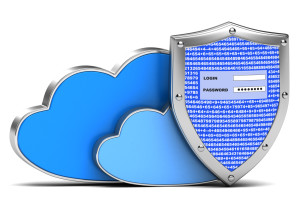 The debate today isn’t whether or not to implement a bring your own device (BYOD) program — it’s how to best go about making the transition to BYOD as smooth as possible. Many businesses have learned that a BYOD program improves productivity and reduces costs. A 2014 survey by research firm Tech Pro found that 74% of businesses surveyed either had an existing BYOD program or were planning to create one.
The debate today isn’t whether or not to implement a bring your own device (BYOD) program — it’s how to best go about making the transition to BYOD as smooth as possible. Many businesses have learned that a BYOD program improves productivity and reduces costs. A 2014 survey by research firm Tech Pro found that 74% of businesses surveyed either had an existing BYOD program or were planning to create one.
Despite the popularity of BYOD programs, moving from work devices to employee-owned devices is not an instant switch. Businesses need to be mindful of the fact that planning and maintaining will be required until the transition is complete. There are four major steps that a business can follow to make this transition as smooth as possible.
1) Have a Clear Goal
A business with a clear vision for its BYOD program will be able to implement it smoothly and efficiently. Some benefits of determining a goal in advance include:
- easier management,
- higher productivity, and
- happier employees.
With a clear end goal, everyone involved in the BYOD implementation process will know what they are trying to achieve and why.
2) Communicate with IT
Good communication with the IT department is key to successfully implementing a BYOD program. Businesses should answer two key questions before beginning the BYOD program:
- What devices are supported?
- Of those devices, what will the business allow to be used?
An employee could potentially use their cell phone, tablet, and/or laptop or other personal computer in a BYOD program. Businesses should know which devices their IT department can best handle. For more uniformity of devices used, businesses could also look into partnering with a vendor that will allow employees to buy devices at a discount. This will make for easier management and streamline any repair or troubleshooting processes.
3) Carefully Create the BYOD Policy
There are many factors to consider when creating a BYOD policy, including:
- Participants in the program
- Eligible devices
- Levels of employee access to business data
- Security considerations
- Whether or not to install a monitoring program
- What to do if a device is lost or damaged
- How much control the business will have over installed and banned apps
- The exit process for an employee who is leaving the business
4) Train Employees
Once setup is complete, it’s important to ensure that all employees who are a part of the program have been properly trained. Communication is again key here; a meeting should be scheduled in person and employees should be aware of the policy regarding BYOD. Initial training will likely take time and resources, but once training is complete and the program is in place, future updates should be quick and efficient.
A BYOD program may seem like a lot of work, but it will soon lead to increased productivity and decreased costs. By being prepared beforehand, a business can ensure that the transition is as smooth and streamlined as possible.

 With the current focus on detection and malware, many companies may be overlooking core data security as a front-line defense. While it’s important to prevent intrusion through detection tools, a safer and more balanced approach to security is to also focus on complementary protection solutions Data Loss Prevention (DLP) and Data Activity Monitoring (DAM).
With the current focus on detection and malware, many companies may be overlooking core data security as a front-line defense. While it’s important to prevent intrusion through detection tools, a safer and more balanced approach to security is to also focus on complementary protection solutions Data Loss Prevention (DLP) and Data Activity Monitoring (DAM).


 Some SMBs make the mistake of thinking that security breaches only happen to the big names. Despite all the attention that the Home Depot, Anthem, and Target data breaches are getting, cyber-attacks are an equal opportunity threat for every size of business. In 2013, approximately 44 percent of SMBs were the victims of a cyber-attack, according to the National Small Business Association.
Some SMBs make the mistake of thinking that security breaches only happen to the big names. Despite all the attention that the Home Depot, Anthem, and Target data breaches are getting, cyber-attacks are an equal opportunity threat for every size of business. In 2013, approximately 44 percent of SMBs were the victims of a cyber-attack, according to the National Small Business Association. Touchscreen smartphones and tablets are making waves in the world of corporate IT. Many companies are eager to utilize the technology despite the fact that many of these devices don’t meet all security needs. However, cloud technology has made security and device management relatively easy.
Touchscreen smartphones and tablets are making waves in the world of corporate IT. Many companies are eager to utilize the technology despite the fact that many of these devices don’t meet all security needs. However, cloud technology has made security and device management relatively easy. At some point in the year 2015, there will be more than 2.5 billion people accessing the Internet with over 10 billion devices. Being able to stream and transmit all that data will require a billion virtual servers connected to a cloud infrastructure.
At some point in the year 2015, there will be more than 2.5 billion people accessing the Internet with over 10 billion devices. Being able to stream and transmit all that data will require a billion virtual servers connected to a cloud infrastructure. While there are several security concerns when implementing voice-over Internet protocol (VoIP) services at a business, one that rarely receives attention is the potential for toll fraud. Some businesses even mistakenly believe that a switch to VoIP will prevent fraud. If anything, VoIP makes the business more susceptible to toll fraud.
While there are several security concerns when implementing voice-over Internet protocol (VoIP) services at a business, one that rarely receives attention is the potential for toll fraud. Some businesses even mistakenly believe that a switch to VoIP will prevent fraud. If anything, VoIP makes the business more susceptible to toll fraud.